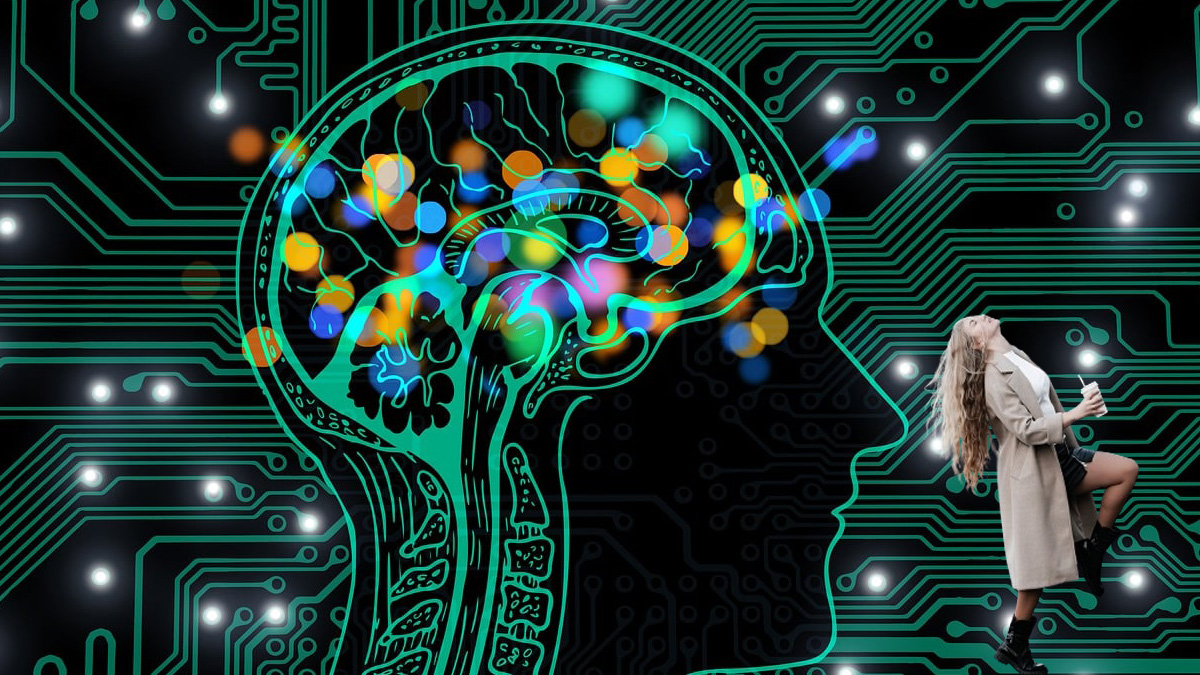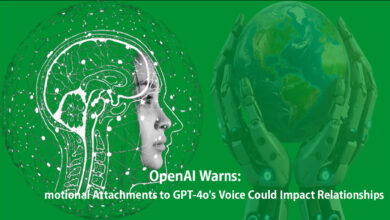Understanding Artificial Intelligence: The Rise of Generative AI

Artificial intelligence (AI) is revolutionizing our world. It allows machines to mimic human abilities like learning, problem-solving, and creativity. With AI, computers can analyze data, recognize patterns, and make decisions—all without human intervention.
Imagine a machine that can see and identify objects. Or one that understands your voice commands and responds accurately. This technology is not just a fantasy; it’s happening now. Self-driving cars are a prime example of AI acting independently, navigating roads without human drivers.
As we move into 2024, the spotlight in the AI realm is on generative AI (gen AI). This exciting branch of artificial intelligence focuses on creating original content—text, images, videos, and more. But to grasp the full potential of generative AI, we must first explore its foundational technologies: machine learning (ML) and deep learning.
Machine Learning: The Backbone of AI
Machine learning is a subset of AI that enables systems to learn from data. Instead of being explicitly programmed for every task, ML algorithms improve their performance as they process more information. They analyze vast amounts of data to identify trends and make predictions.
For instance, when you shop online, ML algorithms track your preferences. They suggest products based on your past behavior. This personalization enhances user experience significantly.
Deep Learning: Going Deeper
Deep learning takes machine learning further by using neural networks—structures inspired by the human brain. These networks consist of layers that process information in complex ways. Deep learning excels at handling unstructured data like images and audio.
For example, when you upload a photo to social media, deep learning algorithms can automatically tag friends or enhance image quality. This capability stems from their ability to recognize intricate patterns within data.
Generative AI: Creating New Possibilities
Now let’s dive into generative AI. Unlike traditional models that only classify or predict outcomes based on existing data, generative AI creates something entirely new. It uses advanced algorithms to generate text that reads like it was written by a human or art that looks like it was painted by an artist.
Consider how platforms like ChatGPT produce coherent conversations or how DALL-E generates stunning visuals from simple prompts. These tools showcase the power of generative AI in transforming creative processes across industries.
Applications Across Industries
The applications for generative AI are vast:
- Content Creation: Writers use tools to brainstorm ideas or draft articles quickly.
- Design: Graphic designers leverage generative models for innovative designs.
- Entertainment: Filmmakers explore new narratives with scriptwriting assistants.
- Education: Students receive personalized tutoring through adaptive learning platforms.
The Future Ahead
As we look ahead, the potential for generative AI seems limitless. Researchers are continuously refining these technologies to enhance accuracy and creativity further.
However, with great power comes responsibility. Ethical considerations surrounding bias in algorithms and copyright issues will need careful attention as this technology evolves.
In conclusion, artificial intelligence has already changed our lives significantly—and it’s just getting started! As generative AI continues to advance in 2024 and beyond, it promises exciting innovations across various fields while challenging us to think critically about its implications for society at large.
Understanding AI: A Simple Breakdown
Artificial Intelligence (AI) can seem complex, but it’s easier to grasp when we break it down into its core components. Think of AI as a series of nested concepts that have evolved over more than 70 years. At the heart of this hierarchy lies machine learning.
What is Machine Learning?
Machine learning is a subset of AI focused on creating models that allow algorithms to make predictions or decisions based on data. Instead of programming computers for specific tasks, we train them to learn from data. This ability to infer and adapt makes machine learning powerful and versatile.
Types of Machine Learning Techniques
There are various techniques within machine learning, each suited for different problems and types of data. Here are some key methods:
- Linear Regression: This technique predicts a continuous outcome based on one or more input variables. It’s straightforward and effective for simple relationships.
- Logistic Regression: Unlike linear regression, logistic regression is used for binary outcomes—think yes/no or true/false scenarios.
- Decision Trees: These models use a tree-like structure to make decisions based on the input features. They’re intuitive and easy to interpret.
- Random Forest: An extension of decision trees, random forests combine multiple trees to improve accuracy and reduce overfitting.
- Support Vector Machines (SVMs): SVMs find the best boundary between classes in your data, making them ideal for classification tasks.
- K-Nearest Neighbors (KNN): This algorithm classifies data points based on their proximity to other points in the dataset, making it simple yet effective.
- Clustering: Clustering techniques group similar data points together without prior labels, revealing patterns in unstructured data.
Why Does It Matter?
Understanding these techniques helps demystify how machines learn from our world. Each method has its strengths and weaknesses, making them suitable for different applications—from predicting customer behavior to diagnosing diseases.
In summary, by viewing AI through the lens of machine learning and its various techniques, we can appreciate the depth and breadth of this fascinating field. Whether you’re a beginner or looking to deepen your knowledge, grasping these concepts is essential in today’s tech-driven landscape.
Understanding Neural Networks: The Brain Behind Machine Learning
In the world of machine learning, one of the most fascinating and powerful tools is the neural network. These algorithms are inspired by the structure and function of the human brain. Just as our brains process information through interconnected neurons, neural networks use layers of nodes to analyze complex data.
What is a Neural Network?
A neural network consists of multiple layers: an input layer, one or more hidden layers, and an output layer. Each layer contains nodes that simulate neurons. These nodes work together to identify patterns in data, making neural networks particularly effective for tasks like image recognition, natural language processing, and even playing games.
How Do Neural Networks Work?
When you feed data into a neural network, it goes through several transformations across these layers. Each node applies a mathematical function to its inputs and passes the result to the next layer. This process continues until the final output is produced.
The magic happens during training. Neural networks learn by adjusting their internal parameters based on feedback from labeled data sets. This allows them to improve their accuracy over time.
Supervised Learning: The Foundation
At the core of many machine learning applications is supervised learning. This approach uses labeled datasets to train algorithms. In supervised learning, each training example comes with an output label that indicates what the correct answer should be.
The goal? To teach the model how to map inputs (the features) to outputs (the labels). Once trained, it can predict outcomes for new, unseen data with impressive accuracy.
Why Choose Neural Networks?
Neural networks excel at identifying complex patterns in large datasets where traditional algorithms may struggle. They can handle unstructured data like images or text effectively—tasks that are challenging for conventional programming methods.
Moreover, as more data becomes available and computational power increases, neural networks continue to evolve and improve their capabilities.
Conclusion
Neural networks represent a significant advancement in machine learning technology. Their ability to mimic human brain functions allows them to tackle intricate problems across various fields—from healthcare diagnostics to autonomous driving.
As we continue exploring this exciting frontier, understanding how these systems operate will empower us to leverage their potential fully. Embrace the future of AI with neural networks leading the way!
Understanding Deep Learning: The Brain Behind AI
Deep learning is revolutionizing the way machines think. As a subset of machine learning, it mimics the human brain’s decision-making process through multilayered neural networks known as deep neural networks.
What Are Deep Neural Networks?
Deep neural networks consist of several layers:
- Input Layer: This is where data enters the network.
- Hidden Layers: Unlike traditional neural networks that have one or two hidden layers, deep learning models boast three to hundreds of these layers. Each layer processes information and extracts features from the data.
- Output Layer: This layer provides the final predictions or classifications.
The multiple hidden layers allow deep learning models to perform unsupervised learning. They can automatically identify patterns in vast amounts of unlabeled and unstructured data. This capability sets them apart from classic machine learning models, which often require more human intervention.
The Power of Automation
One of the most significant advantages of deep learning is its ability to operate at scale without human oversight. It can analyze enormous datasets quickly and efficiently, making it an ideal choice for various applications.
Applications in Real Life
Deep learning excels in fields like:
- Natural Language Processing (NLP): It helps machines understand and generate human language.
- Computer Vision: It enables computers to interpret and make decisions based on visual data.
These technologies are integral to many AI applications we use daily, from virtual assistants to image recognition software.
Why It Matters
As deep learning continues to evolve, its impact on our lives will only grow. By automating complex tasks and identifying intricate patterns in data, it empowers industries ranging from healthcare to finance.
In summary, deep learning represents a leap forward in artificial intelligence. Its multilayered approach allows machines to learn and adapt with minimal human input, paving the way for smarter technology that can transform our world.
Understanding Generative AI: The Future of Content Creation
Generative AI, often referred to as “gen AI,” is revolutionizing the way we create content. This cutting-edge technology uses deep learning models to generate complex and original outputs—ranging from long-form text to stunning images, realistic videos, and even audio. All of this is done in response to user prompts or requests.
At its core, generative AI encodes a simplified representation of its training data. It then draws from this representation to produce new work that bears similarities to the original but is not identical. This process opens up endless possibilities for creativity and innovation.
A Brief History
Generative models have been around for years, primarily used in statistics for numerical data analysis. However, over the last decade, these models have evolved significantly. They now handle more complex data types thanks to three groundbreaking deep learning model types:
- Variational Autoencoders (VAEs): Introduced in 2013, VAEs allow models to generate multiple variations of content based on a given prompt or instruction. This capability enhances creativity by providing diverse options.
- Diffusion Models: First seen in 2014, diffusion models work by adding “noise” to images until they become unrecognizable. They then reverse this process to create original images based on user prompts. This technique has led to remarkable advancements in image generation.
- Transformers: These models are trained on sequenced data and excel at generating extended sequences of content—be it words in sentences, shapes in an image, frames of a video, or commands in software code. Transformers are foundational to many popular generative AI tools today, including ChatGPT, GPT-4, Copilot, BERT, Bard, and Midjourney.
Why It Matters
The implications of generative AI are vast:
- Enhanced Creativity: Artists and writers can leverage these tools for inspiration or even collaboration.
- Efficiency: Businesses can automate content creation processes, saving time and resources.
- Personalization: Brands can create tailored experiences for users based on their preferences.
However, with great power comes responsibility. As generative AI becomes more prevalent, ethical considerations must be addressed—such as copyright issues and the potential for misuse.
Conclusion
Generative AI is not just a trend; it’s a transformative force shaping our digital landscape. By understanding its capabilities and limitations, we can harness its potential responsibly while pushing the boundaries of creativity further than ever before. The future looks bright with generative AI leading the way!
Generative AI, or artificial intelligence that can create new content, works in three key phases.
First, the AI goes through a training phase where it learns from a large dataset to create a foundation model. This model serves as the basis for generating new content.
Next comes the tuning phase, where the AI adapts the model to a specific application or task. This step helps fine-tune the AI’s ability to generate accurate and relevant content.
Finally, in the generation phase, the AI creates new content based on its training and tuning. This content is then evaluated for accuracy and quality before undergoing further tuning to improve its performance.
Overall, generative AI works by learning from data, adapting to specific tasks, and continuously improving its ability to generate high-quality content.
Understanding Foundation Models in Generative AI
Generative AI is revolutionizing how we create and interact with digital content. At its core lies the concept of a “foundation model.” This deep learning model acts as the backbone for various generative applications, enabling machines to produce text, images, music, and more.
What Are Foundation Models?
Foundation models are large-scale neural networks trained on vast amounts of unstructured data. The most prevalent among these are Large Language Models (LLMs), which excel at generating coherent and contextually relevant text. However, the landscape is broader. There are also foundation models tailored for image generation, video creation, sound production, and even multimodal applications that integrate multiple content types.
The Training Process
Creating a foundation model is no small feat. It involves training a deep learning algorithm on terabytes or even petabytes of raw data sourced from the internet. This data can include everything from articles and books to images and videos.
The training process is both compute-intensive and time-consuming. Thousands of graphics processing units (GPUs) work in tandem for weeks to refine the model. The result? A neural network with billions of parameters—complex representations that capture patterns, entities, and relationships within the data.
Why Is It Expensive?
The costs associated with training these models can soar into millions of dollars. The infrastructure required to support such extensive computations is substantial. Each step in the process—from data collection to model refinement—demands significant resources.
Open Source Solutions
Fortunately, not all developers need to start from scratch. Open-source projects like Meta’s Llama-2 offer pre-trained foundation models that developers can leverage without incurring hefty expenses or investing countless hours into training their own models.
Tuning AI Models: Enhancing Performance for Specific Tasks
Tuning an AI model is crucial for optimizing its performance in specific applications. It ensures that the model understands and responds accurately to user inputs. Here, we explore two primary methods of tuning: fine-tuning and reinforcement learning with human feedback (RLHF).
Fine-Tuning: Tailoring to Specific Needs
Fine-tuning involves adjusting a pre-trained model using application-specific data. This process includes:
- Data Collection: Gather labeled data relevant to your task. This could be questions and answers or prompts with expected responses.
- Training: Feed this data into the model. The goal is to help it learn patterns specific to your domain.
- Evaluation: After training, assess the model’s performance using a separate test dataset. This helps ensure it can generalize well beyond the training examples.
Fine-tuning allows the model to become more adept at handling particular queries, improving accuracy and relevance in its outputs.
Reinforcement Learning with Human Feedback (RLHF)
RLHF takes a different approach by incorporating human evaluations into the learning process:
- User Interaction: Users interact with the AI, providing real-time feedback on its responses.
- Feedback Loop: This feedback can include corrections or ratings on how well the AI performed.
- Model Adjustment: The AI uses this information to adjust its algorithms, enhancing future responses based on what users found helpful or accurate.
This method creates a dynamic learning environment where the model continuously improves based on actual user experiences.
Why Tuning Matters
Tuned models are not just more accurate; they also provide a better user experience. When an AI understands context and nuances, it becomes more effective at solving problems and answering questions.
In summary, whether through fine-tuning or RLHF, proper tuning of AI models is essential for achieving high-quality content generation tailored to specific tasks. By investing time in these processes, developers can create smarter, more responsive systems that truly meet user needs.
Understanding AI: A Deep Dive into Its Core Concepts
What is AI?
Artificial Intelligence (AI) is a groundbreaking technology. It empowers computers and machines to mimic human capabilities. This includes learning, understanding, problem-solving, decision-making, creativity, and autonomy.
AI applications can recognize objects visually and comprehend human language. They learn from new experiences and data, making personalized recommendations for users. Some AI systems can operate independently—think of self-driving cars as a prime example.
As of 2024, the spotlight in AI research shines on generative AI (gen AI). This exciting branch creates original content like text, images, and videos. To grasp generative AI fully, we must first explore its foundational technologies: machine learning (ML) and deep learning.
Machine Learning: The Backbone of AI
Machine learning is a subset of AI that enables systems to learn from data without explicit programming for specific tasks. It involves training algorithms to make predictions or decisions based on input data.
Types of Machine Learning
- Supervised Learning: Uses labeled datasets to train algorithms for classification or prediction.
- Unsupervised Learning: Identifies patterns in unlabeled data.
- Reinforcement Learning: Learns through trial-and-error by receiving rewards or penalties.
Among these techniques, neural networks stand out. Modeled after the human brain’s architecture, they consist of interconnected layers that analyze complex data patterns.
Deep Learning: A Step Further
Deep learning is a more advanced form of machine learning using multilayered neural networks known as deep neural networks. These networks have multiple hidden layers that allow them to process vast amounts of unstructured data efficiently.
Key Features of Deep Learning
- Unsupervised Learning: Automates feature extraction from large datasets.
- Semi-supervised Learning: Combines labeled and unlabeled data for training.
- Self-supervised Learning: Generates labels from unstructured data.
- Transfer Learning: Applies knowledge gained from one task to another related task.
Deep learning powers many modern AI applications—from natural language processing (NLP) to computer vision—enabling rapid identification of intricate patterns within massive datasets.
Generative AI: The Creative Frontier
Generative AI refers to models capable of creating original content based on user prompts. This includes generating text, images, audio, and more.
How Generative Models Work
Generative models encode simplified representations of their training data to produce new but similar outputs. Recent advancements in this field are driven by three primary model types:
- Variational Autoencoders (VAEs): Generate multiple variations based on input prompts.
- Diffusion Models: Transform images by adding noise before reconstructing them.
- Transformers: Process sequential data effectively; they are the backbone behind tools like ChatGPT and Midjourney.
The Generative Process
The generative process unfolds in three main phases:
- Training:
- Develops a foundation model using vast amounts of raw data.
- Requires significant computational resources—often costing millions.
- Tuning:
- Adapts the model for specific tasks through fine-tuning or reinforcement learning with human feedback (RLHF).
- Generation & Evaluation:
- Regular assessments improve accuracy over time through ongoing tuning and retrieval augmented generation (RAG).
Weak AI vs. Strong AI: Understanding the Spectrum of Artificial Intelligence
Artificial Intelligence (AI) is not a one-size-fits-all concept. It exists on a spectrum, ranging from simple task-oriented systems to complex entities that could rival human intelligence. To navigate this landscape, researchers have categorized AI into two primary types: Weak AI and Strong AI.
Weak AI: The Task-Specific Performer
Weak AI, often referred to as “narrow AI,” is designed for specific tasks. Think of it as a highly skilled assistant that excels in its designated role but lacks broader understanding or consciousness. Examples include:
- Voice Assistants: Applications like Amazon’s Alexa and Apple’s Siri can perform tasks such as setting reminders, playing music, or answering questions based on pre-defined data.
- Chatbots: These are programmed to handle customer service inquiries or engage users on social media platforms.
- Autonomous Vehicles: Companies like Tesla are developing cars that can navigate roads and avoid obstacles but still operate within a limited framework.
While Weak AI can seem impressive, it operates under strict limitations. It cannot learn beyond its programming or adapt to new situations outside its scope.
Strong AI: The Theoretical Frontier
On the other end of the spectrum lies Strong AI, also known as Artificial General Intelligence (AGI). This type of AI would possess cognitive abilities comparable to those of humans. It would understand context, learn from experience, and apply knowledge across various domains without being specifically programmed for each task.
Currently, Strong AI remains theoretical. No existing systems demonstrate this level of sophistication. Researchers debate whether AGI is even achievable and what it would require—most agree that significant advancements in computing power are essential.
The allure of Strong AI captivates our imagination, often depicted in science fiction as self-aware beings capable of independent thought and emotion. However, we are far from realizing such technology today.
The Future of AI
As we advance in our understanding and development of artificial intelligence, the distinction between Weak and Strong AI becomes increasingly important. While Weak AI continues to enhance our daily lives with convenience and efficiency, the pursuit of Strong AI raises profound ethical questions about consciousness, autonomy, and control.
In conclusion, recognizing the differences between Weak and Strong AI helps us appreciate both current capabilities and future possibilities. As research progresses, we may find ourselves closer to bridging this gap—but for now, we remain grounded in the reality of narrow applications while dreaming about general intelligence’s potential impact on society.







